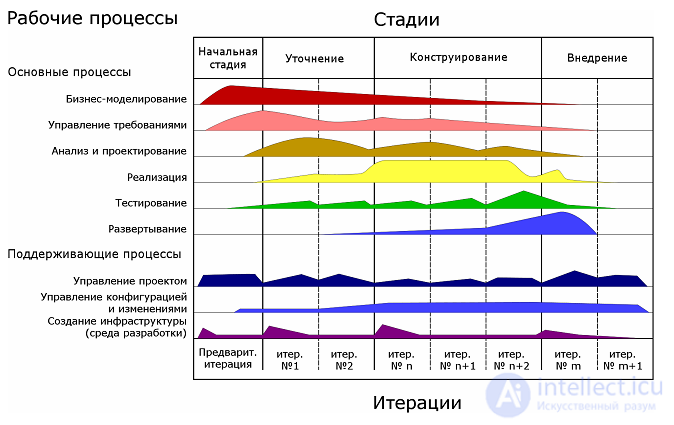Lecture
The Rational Unified Process (RUP) is a software development methodology created by Rational Software.
The principles of RUP are as follows:
RUP uses an iterative development model. At the end of each iteration (ideally continuing from 2 to 6 weeks), the project team should achieve the objectives planned for this iteration, create or modify project artifacts and obtain an intermediate but functional version of the final product. Iterative development allows you to quickly respond to changing requirements, identify and eliminate risks in the early stages of a project, and effectively control the quality of the product being created. The first ideas of the iterative development model were laid in the "spiral model" [1] [2] .
The full product development life cycle consists of four phases, each of which includes one or more iterations:

In the initial phase:
At the end of the initial phase, the achievement of the life cycle stage of the goal (eng. Lifecycle Objective Milestone ) is estimated, which implies agreement among the stakeholders on the continuation of the project.
In the “Refinement” phase, the analysis of the subject area and the construction of the executable architecture are performed. It includes:
Successful implementation of the refinement phase means achieving the lifecycle architecture milestone stage .
In the “Build” phase, most of the product functionality is implemented. Phase Construction is completed with the first external release of the system and a milestone of initial functional readiness (Initial Operational Capability).
In the implementation phase, the final product version is created and transferred from the developer to the customer. This includes a beta program, user training, and product quality determination. If the quality does not meet user expectations or criteria set in the Beginning phase, the implementation phase is repeated again. Accomplishing all goals means achieving the milestone of the finished product (Product Release) and completing the full development cycle.
Comments
To leave a comment
Software and information systems development
Terms: Software and information systems development